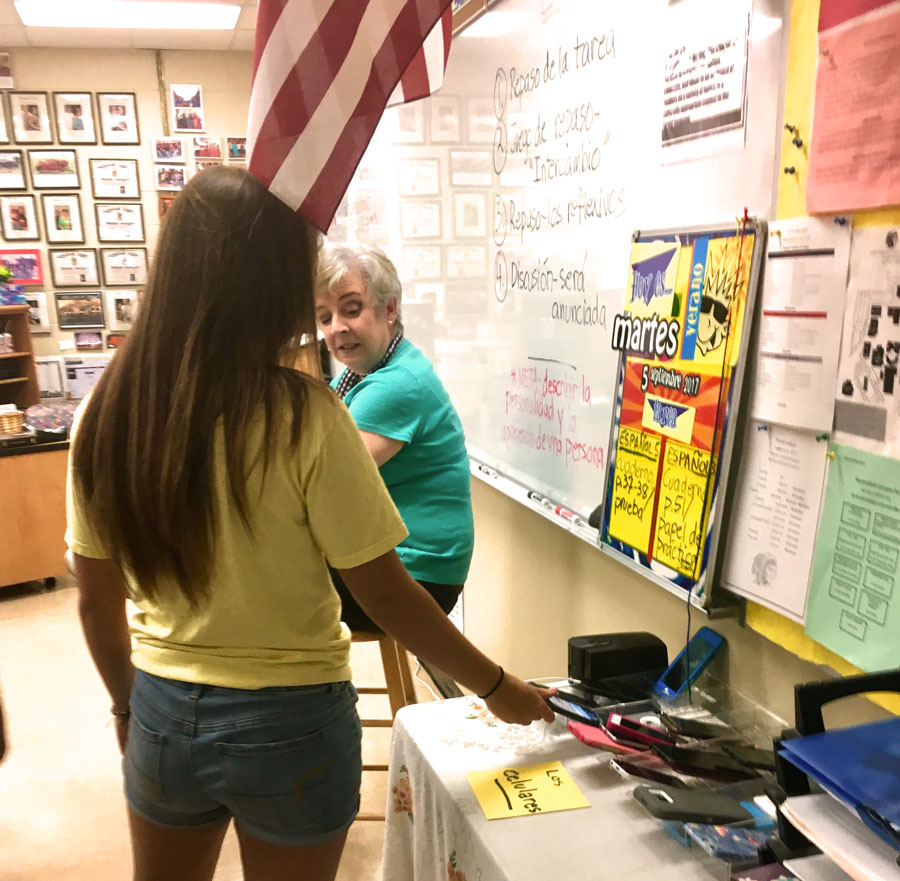TEACHERS TAKE TECH
Teachers are taking a stand and requiring students to disconnect in class in hopes of creating a better learning environment.
September 26, 2017
Last year, a student installed a projector app on their phone and slipped it into their bag instead of placing it in their teacher’s designated cell phone tray. Throughout class, the student kept messing with the teacher’s projector by turning it on and off. This resulted in a strong crackdown on cell phone policy in some classrooms.
Schools often have cell phone policies requiring that phones be put away and kept out of sight. However, in some classes, students are forced to place their phones in an inaccessible area, such as a tray. Although this irritates and upsets many students, teachers see a positive side to this system.
Melody Sweigert, an IB Spanish teacher, has students place their phones in a tray as they enter the class. She counts them to make sure all phones have been collected. Sweigert does this because she believes that accessing translators on their phones does not help students actually learn the information, so it will be difficult for them when they take their IB exams at the end of the year.
Sweigert said, “When there are writing projects or even speaking projects, students would use translator sites on the Internet instead of trying to do it themselves.”
Two college professors did a study where they surveyed four different schools on their cell phone policies and used data from the schools’ average test scores. Their conclusions showed that test scores improved by 6.41 percent when cellphones were prohibited. The results went on to say that due to the wide absence of cell phones, students were able to focus more, leading to a great improvement in academic results.
Regardless of the statistics, some students still have differing opinions on cell phone policies. The Seminole Newspaper surveyed 62 random students, asking whether the lack of cell phones affected them academically. We found that 79 percent of surveyed students did not find the lack of cell phones beneficial to them. In fact, only 21 percent said it could allow for less distraction.
Senior Tia Wilson, a student of Sweigert, said, “I do think it helps students focus, but I feel that we could easily just put our phones in our bookbags. It would take less work and less time instead of her having to count all the phones and then asking people to put their phones [in the tray].”
Although many students believe that cell phones do not impact their education, teachers find it imperative to remove cell phones from the learning environment. They believe it allows students to grasp information better. Further conversation between teachers and their students might better help to bridge the gap between opinions on cell phones and come to a new solution that everyone agrees with.





















